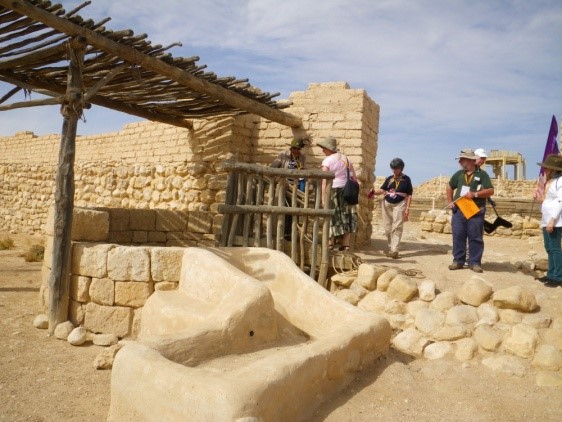Beersheba in History
 Beersheba was renowned as the city of the biblical patriarchs. Abraham, Isaac and Jacob all lived there and Joseph also passed through on his way to Egypt. Abraham dug a well and made an oath with the king which became the name of the place from then till now – Beersheba, meaning ‘Well of the Seven’ or ‘Well of the Oath’ (Genesis 21: 22-34). This is the first covenant between a Jew and a Gentile and one of the only successful such agreements in the Bible. Could it not be that this is Beersheba’s destiny – to be a city that promotes peace between Jew and Gentile?
Beersheba was renowned as the city of the biblical patriarchs. Abraham, Isaac and Jacob all lived there and Joseph also passed through on his way to Egypt. Abraham dug a well and made an oath with the king which became the name of the place from then till now – Beersheba, meaning ‘Well of the Seven’ or ‘Well of the Oath’ (Genesis 21: 22-34). This is the first covenant between a Jew and a Gentile and one of the only successful such agreements in the Bible. Could it not be that this is Beersheba’s destiny – to be a city that promotes peace between Jew and Gentile?
Beersheba was renowned as the city of the patriarchs.
The archaeological remains of the original 10th century BCE Israelite settlement remain largely intact at Tel Be'er Sheva (Tel el Saba). In 1900, it became a garrison of the Turks and an administrative centre for the Bedouin tribes of the Negev. Today, Be'er Sheva (modern spelling) is the ‘Capital of the Negev’ being the largest city in the Negev desert of southern Israel. It is heading towards becoming Israel’s 3rd largest city, with major investment and development planned for the next few years.
Beersheba’s life has always been in its wells. The impressive tourist site at Abraham’s well has been totally overhauled in recent years. It is located just outside the old city and is where the ANZACs entered the city. Peering down into its depths is like peering back through thousands of years of history. If these stones could speak, what would they have to tell us?
Even today, many of the old wells remain in this area, mostly in a state of disrepair, though some are still used by the Bedouin today. Tel Be’er Sheva (Tel el-Saba) gives a commanding view of the area, as does Chauvel’s hill, from where the horses departed for their heroic charge, though this is a more difficult area to access today. From the top of the Tel one gets a real sense of the open territory and difficult stony ground the horses had to negotiate in the face of enemy fire. It has much to offer, yet is rarely on the itinerary of even the biblical tours that visit the Holy Land from Australia and New Zealand. Can we not make this a new pilgrimage site like Gallipoli?
Pictures:
- Ancient wells at Tel Sheva – Jill Curry

